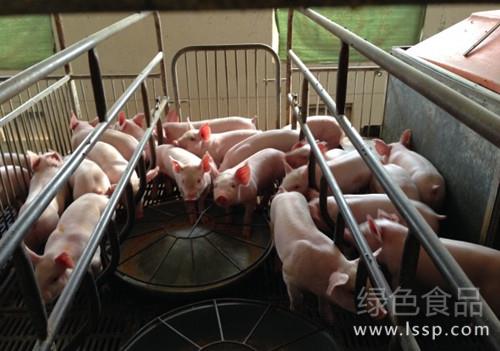Attach importance to the rational drinking water of pigs
First, the harm of insufficient drinking water of pigs is widespread in pig feeding, which only pays attention to feeding while neglecting drinking water, but they do not realize that drinking water and feeding are as important as feeding, even more important than feeding. The main hazards of insufficient drinking water are:
1. Insufficient drinking water will lead to an increase in the incidence of intestinal tract in pigs. Most of the peasant households adopt the traditional one-time feeding method of water supply, regardless of the weather conditions and the type of feed, they are not given drinking water. Pigs often drink dirty water after thirst due to lack of drinking water, especially in hot summer, which directly leads to a variety of intestinal diseases in pigs.
two。 Insufficient drinking water will reduce the digestibility of pigs and increase the feeding cost. In the way of raising pigs in captivity, they are only fed with water and mixed material 2 or 3 times a day, and the water supply is extremely insufficient. Especially for fattening pigs, a large number of thermal feeds are supplemented every day, and these thermal feeds need to absorb a lot of water before they can be digested, absorbed and transported by pigs, and a series of physiological activities such as metabolites in vitro also need sufficient water. After feeding only 2 or 3 times a day, the farmers put the pigsty in a narrow enclosure, resulting in intestinal dryness and heat, weakening of intestinal peristalsis, incomplete absorption of nutrients, gradual decrease of feed intake, decrease of digestibility, hindrance of growth and development, and so on.
Second, strengthen the drinking water management of pigs 1. Set up a drinking sink. In order to meet the drinking water needs of pigs, pig farmers should drink water to pigs at least 4 ~ 5 times a day. It is best to set up a special drinking tank in the pig house or activity field to allow pigs to drink water freely to meet the water needs of pig growth and development.
two。 Drink water according to the physiological characteristics of pigs. Pigs need 2-5 kg of water for every 1 kg of dry feed. The amount of water consumed by pigs is slightly lower in winter, with 2kg of water for every 1 kg of dry feed, 8 kg of water for 1 kg of dry feed in spring and autumn, and 10 kg of water for every 1 kg of dry feed in summer. Lactation sows need more water.
- Prev

Weaning stress of piglets need to learn the feeding method of weaned piglets
Weaning stress of piglets need to learn the feeding method of weaned piglets
- Next

An overview of proteins in the nutritional needs of pigs
(a) carbohydrates are the most widely sourced and account for the largest proportion of nutrients in diets, and are the main source of energy for pigs. In cereal feed, there is little soluble grass sugar and disaccharide, mainly starch, so it is the main energy source of pigs. Starch is converted into glucose by amylase in the digestive tract and then absorbed into the blood to form blood sugar. Biooxidation and energy supply in the body. The digestibility of soluble sugar and starch in livestock is 95% to 100%. In piglets before 3 weeks of age, due to the secretion of pancreas in the digestive tract.
Related
- On the eggshell is a badge full of pride. British Poultry Egg Market and Consumer observation
- British study: 72% of Britons are willing to buy native eggs raised by insects
- Guidelines for friendly egg production revised the increase of space in chicken sheds can not be forced to change feathers and lay eggs.
- Risk of delay in customs clearance Australia suspends lobster exports to China
- Pig semen-the Vector of virus Transmission (4)
- Pig semen-the Vector of virus Transmission (3)
- Five common causes of difficult control of classical swine fever in clinic and their countermeasures
- Foot-and-mouth disease is the most effective way to prevent it!
- PED is the number one killer of piglets and has to be guarded against in autumn and winter.
- What is "yellow fat pig"? Have you ever heard the pig collector talk about "yellow fat pig"?

